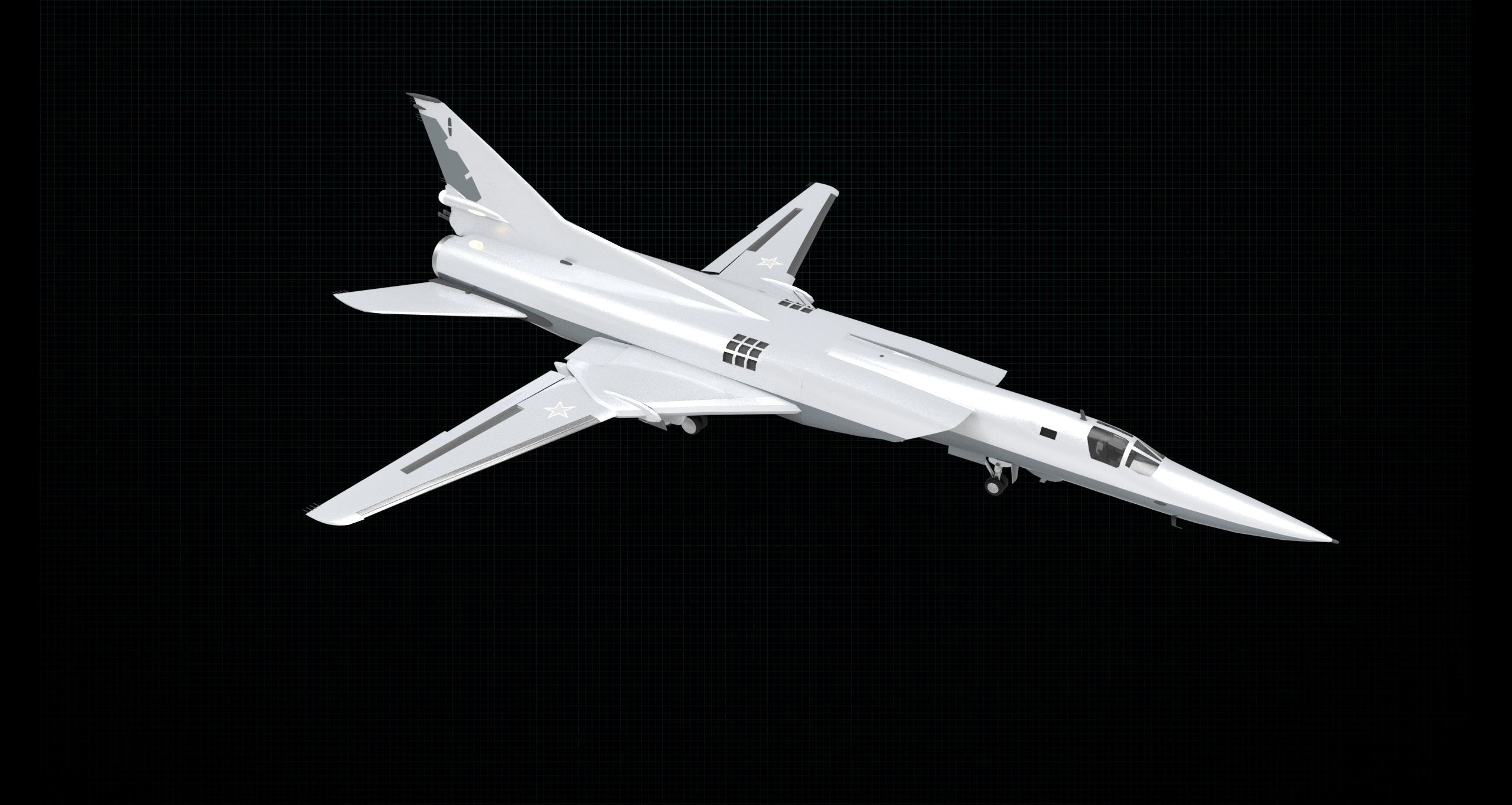
Tupolev TU-22M 3D model
The Tupolev Tu-22M (Russian: Туполев Ту-22М; NATO reporting name: Backfire) is a supersonic, variable-sweep wing, long-range strategic and maritime strike bomber developed by the Tupolev Design Bureau in the 1960s. According to some sources, the bomber was believed to be designated Tu-26 at one time. During the Cold War, the Tu-22M was operated by the Soviet Air Forces (VVS) in a missile carrier strategic bombing role, and by the Soviet Naval Aviation (Aviatsiya Voyenno-Morskogo Flota, AVMF) in a long-range maritime anti-shipping role.[1] Significant numbers remain in service with the Russian Air Force, and as of 2014 more than 100 Tu-22Ms were in use.In 1962, after the introduction of the Tupolev Tu-22, it became increasingly clear that the aircraft was inadequate in its role as a bomber. In addition to widespread unserviceability and maintenance problems, the Tu-22's handling characteristics proved to be dangerous. Its landing speed was 100 km/h (60 mph) greater than previous bombers and it had a tendency to pitch up and strike its tail upon landing. It was difficult to fly, and had poor all-round visibility.[4] In 1962, Tupolev commenced work on major update of the Tu-22. Initially, the bureau planned to add a variable-sweep wing and uprated engines into the updated design. The design was tested at TsAGI's wind tunnels at Zhukovsky.[4]
During this time Sukhoi developed the T-4, a four-engine titanium aircraft with canards. A response to the XB-70, it was to have a cruise speed of 3,200 km/h (2,000 mph), requiring a major research effort in order to develop the requisite technologies. Tupolev, whose expertise is with bombers, offered the Soviet Air Force (Voyenno-Vozdushnye Sily, VVS) a massively updated version of the Tu-22












